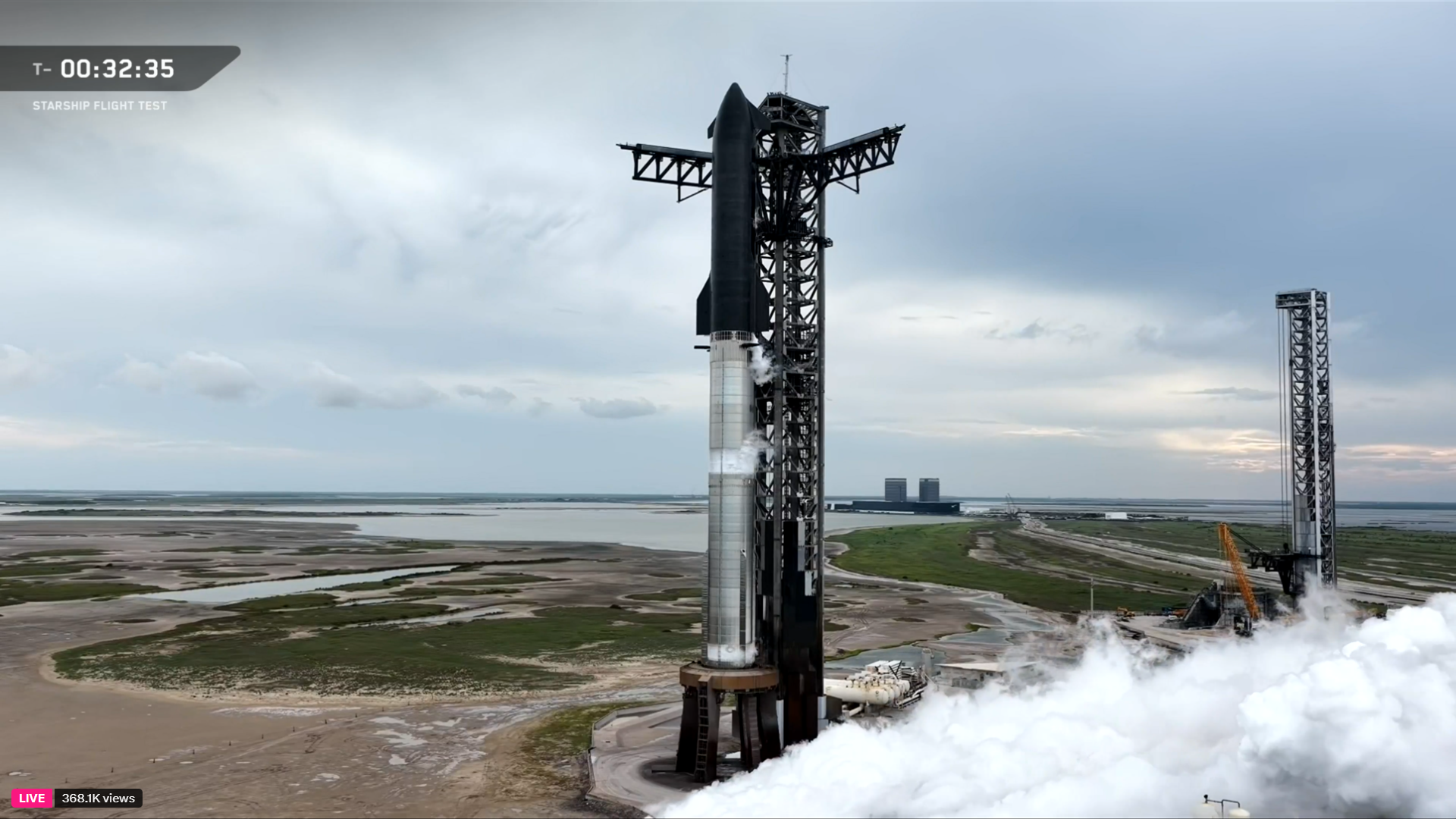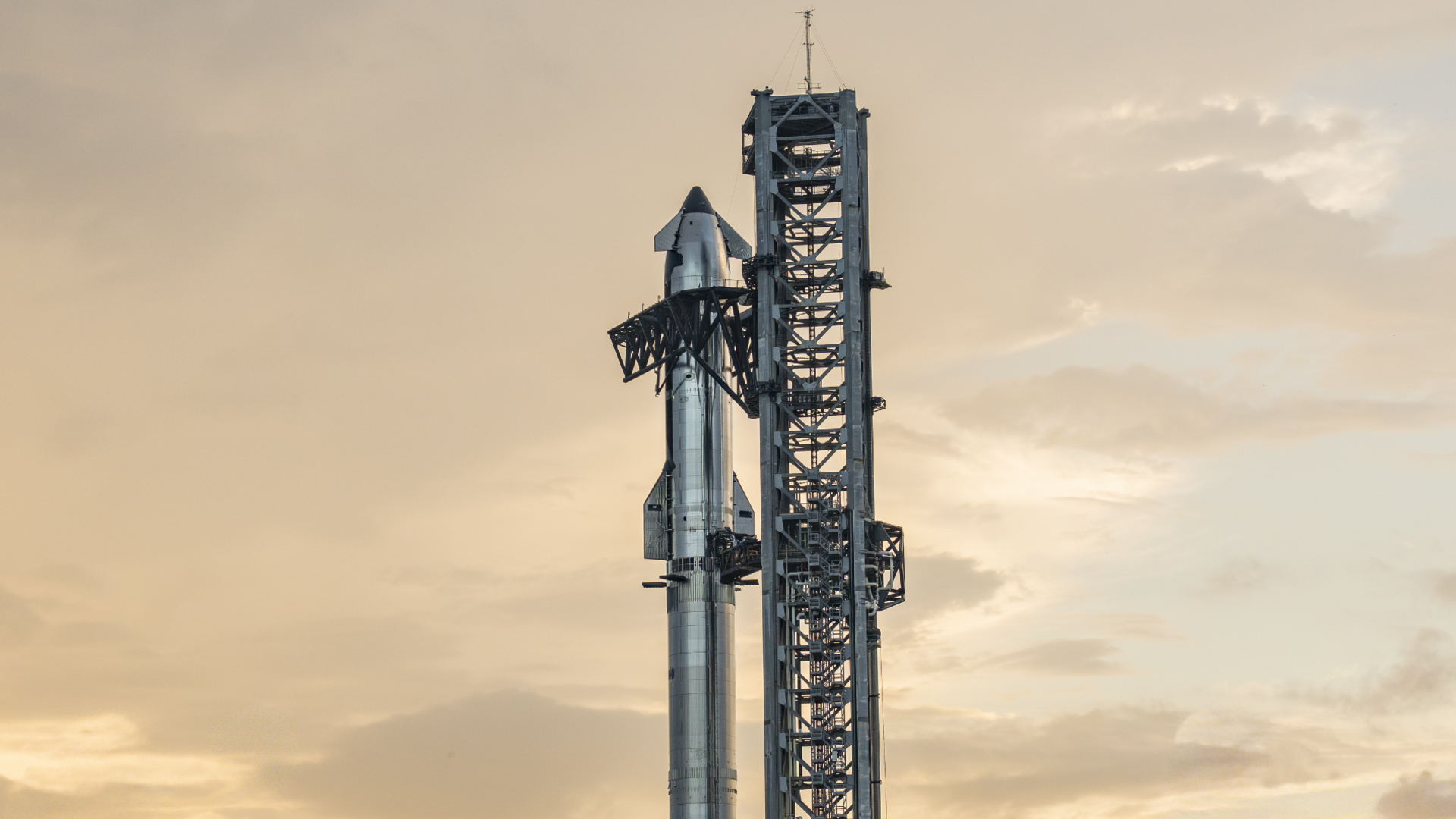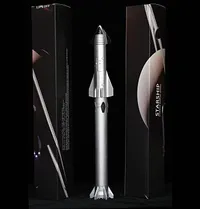SpaceX scrubs crucial Starship Flight 10 launch again, this time due to weather
It was the second day in the row that Starship couldn't get off the ground.
SpaceX called off the planned 10th test flight of its Starship megarocket for the second day in a row on Monday (Aug. 25), this time because Mother Nature wouldn't cooperate.
SpaceX originally aimed to launch Starship Flight 10 from its Starbase site in South Texas on Sunday evening, during an hourlong window that opened at 7:30 p.m. EDT (2330 GMT), but was thwarted by an issue with ground systems. The company tried again today during the same window but had to scrub again, because anvil-shaped clouds failed to clear the area. Such clouds pose an unacceptable risk of lightning, which could kill a launch in the cradle.
"Launch called off for tonight due to anvil clouds over launch site (lightning risk)," SpaceX CEO Elon Musk wrote on social media after the launch scrub. Musk was onhand for the launch attempt and gave an overview of Starship during live commentary.

Starship Die Cast Rocket Model Now $47.99 on Amazon.
<p>If you can't see SpaceX's Starship in person, you can score a model of your own. Standing at 13.77 inches (35 cm), this is a 1:375 ratio of SpaceX's Starship as a desktop model. The materials here are alloy steel and it weighs just 225g."Standing down from today’s flight test attempt due to weather. Starship team is determining the next best available opportunity to fly," SpaceX said via X on Monday evening.
The next possible chance is Tuesday evening, during the same hourlong window. Whenever Starship flies again, you'll be able to watch the action here at Space.com, courtesy of SpaceX.
"We do have a phenomenal logistics team, so we should hopefully be able to replenish prop everything," SpaceX spokesperson Dan Huot said during live commentary, using an abbreviation for the propellant used to launch Starship. "We don't have to refill all the water tanks because we didn't fire off the deflector, but we'll have to reload the prop."

SpaceX is developing Starship — the biggest and most powerful rocket ever built — to help humanity settle the moon and Mars, among other ambitious exploration feats.
Breaking space news, the latest updates on rocket launches, skywatching events and more!
The vehicle consists of two elements — a huge booster called Super Heavy and an upper-stage spacecraft known as Starship, or simply Ship. Both stages are made of stainless steel and are designed to be fully and rapidly reusable.
Starship flew for the first time in April 2023 and now has nine test missions under its belt. Three of those launches occurred this year, in January, March and May.
Ship had problems on all three occasions. On both Flight 7 and Flight 8 , the 171-foot-tall (52 meters) spacecraft exploded less than 10 minutes after launch. Ship flew for much longer on Flight 9 but ended up losing its attitude control and broke apart in Earth's atmosphere during reentry.
If all goes according to plan on Flight 10, Super Heavy will perform several in-flight experiments and then guide itself to a controlled splashdown in the Gulf of Mexico about seven minutes after liftoff.
Ship, meanwhile, will aim to deploy eight dummy versions of SpaceX's Starlink internet satellites, relight one of its six Raptor engines in space, and come down in the Indian Ocean about 66 minutes post-launch.

Michael Wall is a Senior Space Writer with Space.com and joined the team in 2010. He primarily covers exoplanets, spaceflight and military space, but has been known to dabble in the space art beat. His book about the search for alien life, "Out There," was published on Nov. 13, 2018. Before becoming a science writer, Michael worked as a herpetologist and wildlife biologist. He has a Ph.D. in evolutionary biology from the University of Sydney, Australia, a bachelor's degree from the University of Arizona, and a graduate certificate in science writing from the University of California, Santa Cruz. To find out what his latest project is, you can follow Michael on Twitter.
You must confirm your public display name before commenting
Please logout and then login again, you will then be prompted to enter your display name.

